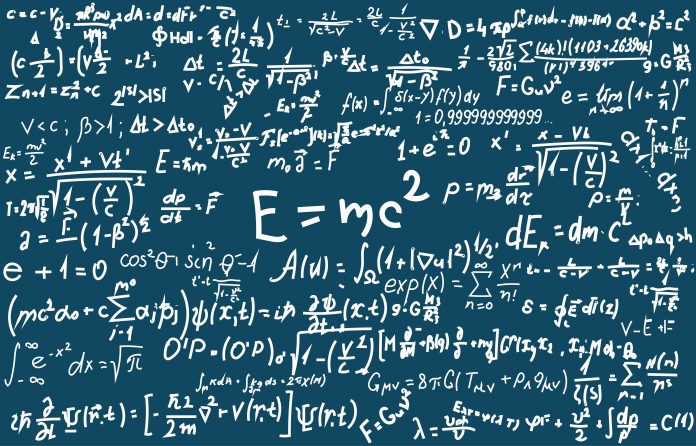Here, Katri Huitu and Kati Lassila-Perini from Helsinki Institute of Physics, Finland, chart open science in the making and give a short overview of related accelerator research expertise in Finland
The Helsinki Institute of Physics (HIP) successfully coordinates Finland’s research with CERN and contributions to FAIR, the Facility for Antiproton and Ion Research, currently being constructed in Darmstadt, Germany. HIP is a national institute and organisation operated by five major Finnish universities in geographically separate cities: Helsinki, Jyväskylä, Espoo, Tampere and Lappeenranta. In addition, since 2018, the Radiation and Nuclear Safety Authority has been an interim member.
Research at HIP
The extensive expertise related to accelerator research from all involved institutes is fully utilised in HIP, which currently covers a continuum of research topics from theoretical physics, analyses of accelerator experiments, experimental setups and instrumentation, as well as technology development and applications.
Currently, the main research focus of HIP is on three of the CERN LHC experiments: ALICE, CMS and TOTEM, where Finnish scientists contribute significantly to ultra-relativistic heavy-ion physics, new physics searches, standard model measurements and forward physics. The full physics exploitation of these, including the preparation of their high-luminosity phase, constitutes the highest priority of the Finnish high energy physics community. Computing and data access are an integral part of this physics exploitation. HIP participates in the Worldwide LHC Computing Grid through the Nordic and the HIP centres. HIP is also involved in other CERN experimental activities, such as ISOLDE, which provides radioactive ion-beams, and CLOUD setup, where climate change can be studied in a controllable laboratory environment. HIP is also actively contributing to two conceptually different designs of the next generation CERN particle colliders, namely the compact linear electron-positron collider (CLIC) and the future circular collider (FCC).
Annually, almost all of the three hundred peer-reviewed research articles written by HIP researchers are published in open channels. Thus, HIP is one of the leading institutes in open publishing in Finland. In the field of high energy physics, making articles globally available has long traditions, as already a quarter of a century ago open databases of articles in the field flourished. The great benefits of easy access to all articles were globally understood.
Tightly connected to the HIP’s experimental group, HIP’s Open Data and Education is a showcase project contributing to Open Science. It is a strong actor in the open data project of the CMS experiment, bringing huge amounts of data for wider use in the scientific community and for school education. It has organised several courses to high-school teachers on the use of open data in education in Finland, as well as some training sessions at CERN. The project also organises visits from Finnish high schools to CERN. These kinds of outreach activities are an integral part of HIP.
Open science adds collaboration between theory and experiment
In the world where open science is often seen as an abstract goal, the Helsinki Institute of Physics has taken the pragmatic approach to actually invest in person power to make it happen. The special project built around open data and education allows HIP scientists to be involved full time in the open data project of the CMS experiment at CERN and to promote the use of open data in education in Finland.
The first release of CMS open data took place in 2014, an unprecedented move in the field of particle physics. No data of that complexity had ever been previously released. There were concerns whether scientists external to the CMS collaboration would ever be able to use these data, but soon after the release, a group of theorists from MIT set to work. Two years later – in a time comparable to that needed for a detailed data analysis even within the CMS collaboration – the first publications on these data came out. And more was to come.
The CMS experiment has now released two PB of research-level data under the coordination of a project leader from HIP. The coordination of such a project is a full-time job and it is important that the institutes involved in large scientific endeavours value such activities, which unfortunately, together with contributions to the development of software and computing tools of ever-increasing complexity, are often considered to be “career-killers”. These domains should be considered an integral part of research and contributing to them at all levels, from trainees to permanent research-level positions, is as important as contributing to the final research publications. Open science should not just be empty words, but concrete actions and investment.
Open science at high schools
HIP is also active in bringing these data in a streamlined form to the classroom. Several summer trainees, as well as two Master’s-level students, have contributed to building example material and piloting it with teachers and students. This activity finds fertile ground in Finland as since 2000, HIP has coordinated an extensive high-school visit programme to CERN with close to 6,000 students and teachers having visited CERN from the start of the programme. Teachers are keen to integrate science topics into their teaching, and HIP has organised two-day teacher training on the use of the CMS experiment (and other) open data regularly since 2017.
HIP provides example material on data analysis using widely adapted open-source “Jupyter notebooks” as a programming platform and common data-handling libraries in python programming language. The programming exercises can be done interactively on browsers using freely available resources such as mybinder.org or Google Colab, thus avoiding the need of program installation on students’ computers.
Benefits for students
The activities in the education domain in HIP are also supported by the National Agency of Education in Finland and are considered an excellent example of actions in line with the new high-school curriculum which will come into force next year. Computing and data skills are relevant across the curriculum, and the same tools can be used with different data in different subjects. Students will learn data skills in a meaningful way, giving an opportunity to all students, independently of their interest in – or prejudices against – computers or programming to enter the fascinating world of data. The skills that students learn with particle physics data are easily transferred to other subjects, serving as an important bridge to the research world and to working life.
Please note: This is a commercial profile











